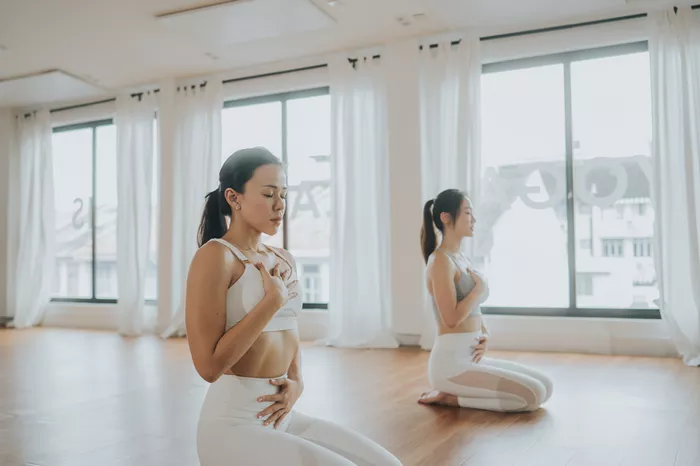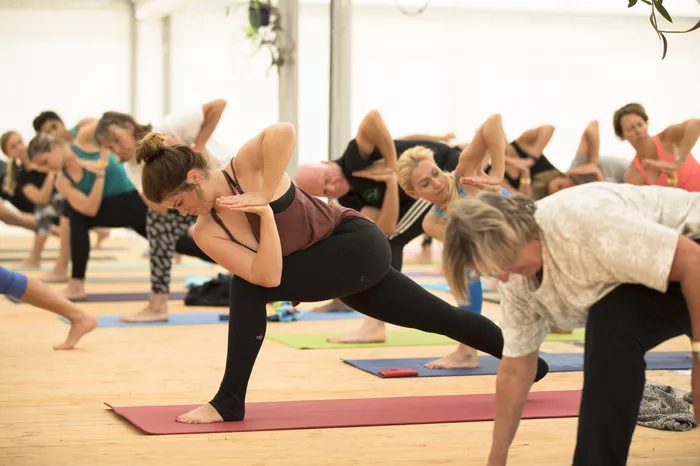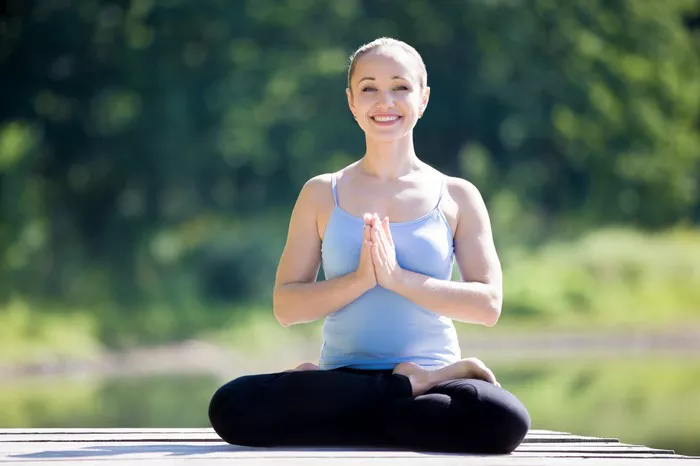Prajna Yoga, often referred to as the “Yoga of Wisdom” or “Yoga of Understanding,” is a profound system of yoga that leads practitioners toward the realization of true knowledge and enlightenment. Rooted deeply in the teachings of ancient Indian philosophy, Prajna Yoga transcends physical postures, focusing instead on the cultivation of insight, awareness, and the direct experience of the truth of existence.
In this article, we will explore the concept of Prajna Yoga, its principles, practices, and the profound impact it can have on our spiritual journey and daily lives. Whether you are a seasoned yoga practitioner or a beginner, understanding how to do Prajna Yoga can bring about profound transformation in both your mind and body.
What is Prajna Yoga?
Prajna Yoga is a form of meditation and spiritual practice that is centered around the cultivation of Prajna, which is often translated as “wisdom” or “insight.” In the context of yoga, Prajna represents a deeper understanding of reality, beyond the surface of physical existence and beyond intellectual knowledge. It is the realization of the self, the universe, and the interconnectedness of all things.
While many types of yoga, such as Hatha Yoga and Ashtanga Yoga, focus primarily on physical postures (asanas) and breathwork (pranayama), Prajna Yoga shifts the emphasis toward mental clarity, self-awareness, and direct experiential knowledge. It is not merely a practice of sitting in meditation; rather, it is a comprehensive approach to understanding the nature of the mind and consciousness.
The Essence of Prajna Yoga
Prajna Yoga is ultimately a spiritual path that involves a process of inner awakening. It draws upon the core teachings of Buddhism, Advaita Vedanta, and other spiritual traditions, all of which emphasize the importance of wisdom and discernment in the pursuit of enlightenment. Unlike other forms of yoga, which might focus on achieving physical strength or flexibility, Prajna Yoga emphasizes the cultivation of mental discipline, insight, and higher consciousness.
The goal of Prajna Yoga is to transcend the dualistic nature of the mind and achieve a state of non-duality, or Advitaya. This state is one where the practitioner no longer sees themselves as separate from the world around them, but rather experiences an intimate connection with the universe and all living beings.
Key Principles of Prajna Yoga
Prajna Yoga is guided by several important principles that shape the practice and philosophy. These principles are interrelated and serve as the foundation for deepening one’s understanding of the self and the world.
Non-Duality (Advitaya)
Prajna Yoga teaches that the ultimate reality is non-dual in nature. The perception of separation between the self and the world is seen as an illusion. By practicing non-duality, the practitioner seeks to dissolve the false boundaries between subject and object, self and other, realizing that everything in the universe is interconnected.
Mindfulness and Awareness
Mindfulness is a central component of Prajna Yoga. By cultivating awareness of the present moment, practitioners develop clarity and discernment, enabling them to perceive reality as it truly is, without the distortion of personal biases or attachments. This requires an ongoing awareness of thoughts, feelings, sensations, and the surrounding environment.
Detachment (Vairagya)
Prajna Yoga emphasizes detachment from the fleeting and impermanent aspects of life. This does not mean renunciation of the world, but rather a shift in attitude toward worldly possessions, desires, and emotions. By cultivating detachment, the practitioner learns to remain unaffected by the ups and downs of life, maintaining an inner sense of peace and equanimity.
Self-Inquiry (Atma Vichara)
Self-inquiry, or the practice of asking “Who am I?”, is a powerful tool in Prajna Yoga. This introspective questioning leads to the discovery of the true self, beyond the ego and mental constructs. Through self-inquiry, the practitioner gradually uncovers the nature of their own consciousness and becomes aware of their essential, unchanging nature.
Surrender (Ishvara Pranidhana)
The concept of surrender in Prajna Yoga refers to letting go of the need to control or manipulate the outcomes of life. It is about trusting the divine intelligence of the universe and recognizing that everything unfolds according to a higher plan. By surrendering to this higher wisdom, the practitioner opens themselves to greater peace, clarity, and insight.
The Role of Meditation in Prajna Yoga
Meditation is the cornerstone of Prajna Yoga. Unlike other forms of yoga that focus on asanas (postures) or pranayama (breathwork), Prajna Yoga is primarily concerned with mental discipline and awareness. Meditation in Prajna Yoga aims to quiet the fluctuations of the mind (chitta vritti) and allow the practitioner to experience a state of stillness and insight.
There are several forms of meditation used in Prajna Yoga:
Vipassana Meditation
Vipassana, or insight meditation, is one of the primary methods used in Prajna Yoga. This practice involves observing the breath, bodily sensations, thoughts, and emotions in a non-judgmental and mindful manner. The aim is to develop a deep awareness of the impermanent and interconnected nature of all phenomena. Vipassana helps to cultivate insight into the nature of suffering (dukkha), its cause, and the path to its cessation.
Zazen Meditation
Zazen is a seated meditation practice rooted in Zen Buddhism. In Prajna Yoga, Zazen meditation is used to develop a direct awareness of the present moment. Practitioners sit in a comfortable posture, focusing on the breath and observing thoughts as they arise, without attachment. This meditation practice is known for its simplicity and effectiveness in cultivating mindfulness.
Self-Inquiry Meditation
This form of meditation is a practice of asking the question, “Who am I?” or “What is my true nature?” The question is not meant to be answered intellectually but is intended to direct the mind toward a deeper realization of the self. Through this practice, the practitioner comes to understand their true nature beyond the egoic identity.
How to Practice Prajna Yoga
Prajna Yoga is not something that can be learned through theoretical knowledge alone. It requires direct experience and practice. Below is a step-by-step guide on how to begin practicing Prajna Yoga.
Set an Intention
Begin by setting an intention or Sankalpa for your practice. This could be a simple affirmation such as “I seek wisdom and clarity” or “I am open to the truth of my existence.” Setting an intention helps to focus the mind and align your practice with your spiritual goals.
Create a Sacred Space
Choose a quiet, comfortable space where you can meditate without distractions. This space should be conducive to deep contemplation and should ideally be free of external noise and interruptions. Light candles, incense, or use any other elements that create a peaceful environment.
Prepare Your Body
While Prajna Yoga does not focus on asanas, it is still important to prepare the body for meditation. Begin with gentle stretching or yoga postures to release tension and improve circulation. This will help you to sit comfortably during your meditation practice. Postures such as Sukhasana (easy seat) or Padmasana (lotus position) are ideal for meditation, but you can sit in any position that allows for a straight spine.
Focus on Your Breath
Sit with a straight spine, close your eyes, and bring your awareness to your breath. Observe the natural rhythm of your inhalations and exhalations without trying to control them. Allow the breath to be your anchor, guiding your awareness into the present moment.
Practice Mindful Awareness
As you meditate, begin to observe the thoughts, emotions, and sensations that arise. Do not judge or identify with them; simply observe them with detachment. This practice helps to cultivate a sense of clarity and wisdom, as you begin to see thoughts and emotions as fleeting phenomena, rather than permanent aspects of your identity.
Engage in Self-Inquiry
When your mind becomes quiet, gently bring the question “Who am I?” into your awareness. Do not seek an intellectual answer. Instead, let the question guide you into a deeper experience of the self. Explore the sensations, thoughts, and feelings that arise as you sit with this question.
End with Gratitude
As your meditation session comes to a close, take a few moments to express gratitude for the insights and experiences you have had during your practice. Thank yourself for dedicating time to your spiritual growth and affirm your intention to continue on the path of wisdom.
The Benefits of Prajna Yoga
Practicing Prajna Yoga can bring about profound changes in all aspects of life. Some of the key benefits include:
Enhanced Clarity and Insight: Through meditation and mindfulness, practitioners gain a deeper understanding of the nature of reality, which leads to greater clarity and insight.
Emotional Balance: By cultivating detachment and self-awareness, Prajna Yoga helps to reduce emotional reactivity, leading to greater emotional stability and equanimity.
Increased Self-Knowledge: The practice of self-inquiry helps individuals uncover their true nature, leading to greater self-awareness and understanding.
Spiritual Growth: As practitioners deepen their meditation practice, they move closer to spiritual liberation, transcending the limitations of the ego and realizing their connection to the divine.
Stress Reduction: By quieting the mind and focusing on the present moment, Prajna Yoga helps to reduce stress and promotes a sense of inner peace and tranquility.
Conclusion
Prajna Yoga is a deeply transformative practice that requires dedication, patience, and an openness to inner exploration. By focusing on the cultivation of wisdom, mindfulness, and self-awareness, Prajna Yoga offers a path to profound self-realization and spiritual awakening.
Whether you are just beginning your journey or have been practicing yoga for many years, incorporating the principles and practices of Prajna Yoga into your life can help you unlock deeper levels of understanding and connect you with the eternal truth of existence. Through meditation, mindfulness, and self-inquiry, you can learn to see beyond the illusions of the mind and experience the world as it truly is—one of interconnectedness, unity, and wisdom.
Related Topics:
















